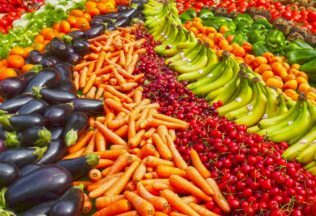The return of the digital milkman

Source: www.ausfoodnews.com.au

The retail gorillas, Coles and Woolworths may still have 75 per cent of grocery market share, but they are in the gunsights of a horde of hunters, all using new fangled weapons developed from the base of ‘Digital’ in a myriad of ways.
Meanwhile. The gorillas are acting like frogs, quietly doing backstroke across the pan, and back again, as the digital hunters pile wood onto the stove. They do have some digital services, order and delivery, order and pick up, but all suffer from the disease that eventually killed Thomas Dux, they are an offshoot of the current model, not an experiment designed from the ground up to disrupt and destroy the current model.
In the future, the business model we are all used to, the suburban or mall based supermarket carrying anything from 1,000 Sku’s as does Aldi, up to 12-20,000 as do the biggest Coles and Woollies stores will decline significantly in importance. In the future, the supermarket as we see them currently will be a much smaller part of the revenue pie, for a number of reasons:
- Cost of entry is reducing. Cost of entry into FMCG has been, and will be further, eroded. From global sourcing from low cost non proprietary manufacturers, to the ability to cut out the retailers with direct to customer channels. These days, all you need is an idea, a little working capital and youtube channel. This may be a radical over-simplification, but there are now products and brands we have never heard of that are selling successfully using this direct model. There have been some notable successes, like Dollar Shave club, a 2012 start-up recently sold for a billion dollars to Unilever, after becoming the second largest shaver brand in the US. No supermarkets. I have read commentary that a $billion hugely over values the purchase, but given it gives Unilever an entry point into a category where they had no offerings, that is adjacent to their mens grooming and personal care business, it makes a lot of sense. Similarly, Procter and Gamble, not known for knee jerk marketing, is trialling a laundry pick-up and delivery service branded ‘Tide Spin’ in Chicago, and is experimenting with Amazon Prime, and IoT again using the Tide
- Availability is the new benchmark. The gorillas have up to 20,000 SKU’s on their books, most individual outlets will not have more than 10,000 on shelf, available, after local conditions are accommodated. Digital retailers have hundreds of thousands of options, all available within a very short time. If you need it right now, immediately, go to the local store, and if they have it, so can you, but if you can wait a day, you can have whatever you want delivered. It seems to me a that consumers are prepared to pay a premium for convenience, simply an anagram (almost) of ‘Availability’.
- Customer loyalty is dead. Loyalty to a channel, and individual retailers in the channel has been eroded terminally by the range of purchase options opening up. Coles and Woolies compete on price, and parking, only two of a wide range of options consumers now have available to them to determine ‘Value’ of a purchase channel.
The complication for ‘mass grocery’ has been that challenging ‘last mile’. How do you get the products to the consumers efficiently, and cost effectively. It can work pretty well for high value dry goods, perishables present their own particular problems nobody has solved yet. Indeed, Aussie Farmers Direct, one of the groups that seemed to have survived the start-up phase, and had built a customer base and presumably processes to manage customer relationships went into administration on Monday, March 5, citing competition from the supermarket chains as the reason.
However, autonomous everything powered by data will deliver us models that work, just as Uber cracked the taxi industry, and is now moving into home delivery for restaurants with UberEats, Supermarkets are an easy next step.
As I reflect on my commercial history, part of it was in the dairy industry, where there were milkmen calling on pretty much every suburban home every day. There was a ‘Depot’ system covering the country, and every milk company tried hard to get the ‘milkos’ to deliver more than just milk. After all, they were there anyway, so the marginal cost was low. Hindsight, and we knew it at the time, tells me that the communication and payments systems were not up to the job 30 years ago.
They are now, so I predict the return of the ‘Milko’ just the digitally enhanced model. Pity the dairy companies all took the short term view and flogged off all that real estate with the depots on them!
Allen Roberts is a guest contributor to Australian Food News and writes another of his regular articles here. He is the Director of Strategy Audit www.strategyaudit.com.au and has worked in the food sector for more than 35 years. To read his full biography click HERE.
Related articles
Post Views:
2,108

